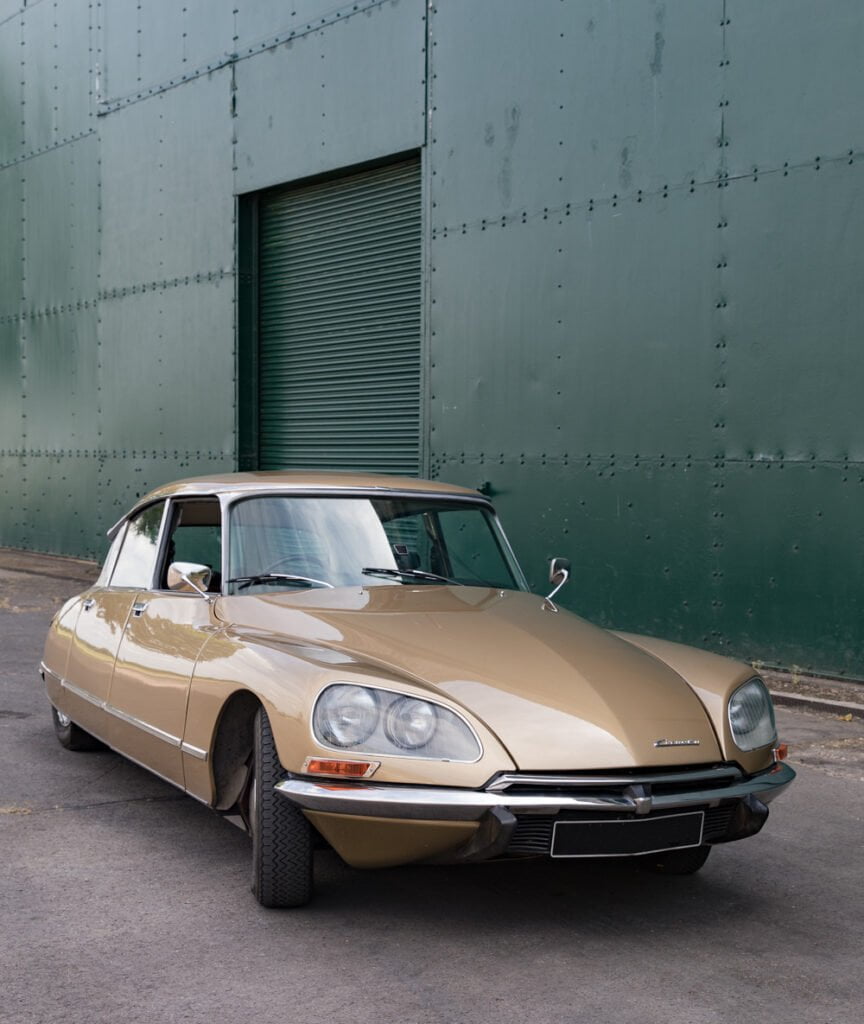
After 18 years of secret development as the successor to the Traction Avant, the DS 19 was introduced on 5 October 1955 at the Paris Motor Show. In the first 15 minutes of the show, 743 orders were taken, and orders for the first day totalled 12,000, a record that stood until it was eclipsed by the Tesla Model 3. It was the first mass production car equipped with hydropneumatic suspension, plus disc brakes, a glass fibre roof to lower the centre of gravity and a host of other innovations. The 1967 series 3 also introduced directional headlights to a mass-produced car.
This DS 20 was made in South Africa and is a beautiful example of the Citroën “Goddess”.
“The car is what I always dreamed of. It’s a dream to drive; it’s so lively and silent!!!!”
Electric Conversion Options
The amazing innovation of the DS was never matched by its engine. It’s a cruisy car and this electric conversion is one of our all-time favourites. It’s not easy though – there is a chassis cross-member that separates the engine from the gearbox and the famous hydropneumatic suspension needs to be driven somehow. We developed a new pumping system based on a C5 pump, which is extremely efficient and creates a slightly firmer ride which is a significant improvement over the original.
Manual gearbox
There are two possibilities here: low or high voltage.
The low voltage option uses a Hyper9 electric motor to drive the original manual or automatic clutch gearbox. Battery options are 52kWh (no batteries in the boot) or 78kWh and you can expect about 3 miles/kWh.
The high-voltage option uses a TorqX-310 350V motor to drive the original gearbox, CCS rapid charging and 62 kWh of batteries.
High voltage with fixed reduction drive
TorqX-310 350V electric motor with a 2:1 fixed in-line reduction gear final drive and CCS rapid charging. 62kWh of batteries, though more can be fitted in the “sub boot” for additional range.
This option makes the DS what it was always meant to be: smooth, silent and effortless, floating on air.
What this customer wanted
This customer chose a low-voltage system to drive the vehicle via his original manual gearbox, but with an electric reverse gear. 52kWh of batteries gives about 140 miles range and is complemented by a 22kWh on-board AC charge system, to enable a full re-charge in about two hours.
| Petrol Engine | Electric Motor | |
| Power: | 73kW @ 5,500rpm | 90kW @ 4,000rpm |
| Torque: | 148Nm @ 3,500rpm | 235Nm @ 0rpm |
| 0-60: | 13.2 seconds | 11 seconds |
| Top Speed: | 105mph | 110mph |
| Fuel: | Petrol | Electricity |
| Cost Per Mile: | 24p | 3.5p |
| CO2 Per Mile: | 0.44kg | 0kg |








